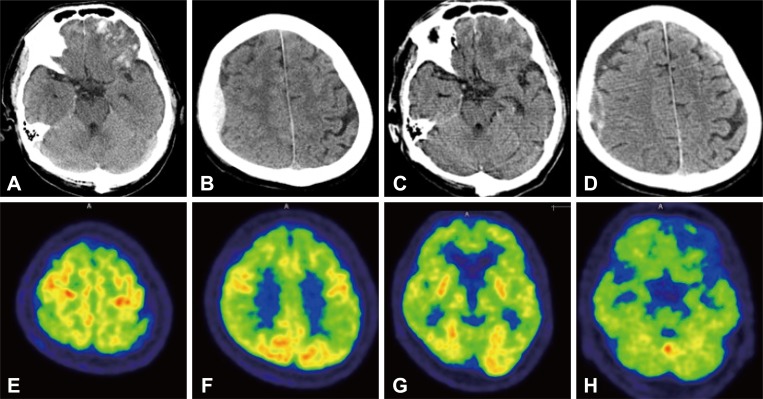Dement Neurocogn Disord.
2017 Jun;16(2):54-55. 10.12779/dnd.2017.16.2.54.
Unusual FDG-PET Findings in Traumatic Brain Injury; Did Traumatic Brain Injury Provoke Rapid Progression of Alzheimer's Disease?
- Affiliations
-
- 1Department of Neurology, Veterans Health Service Medical Center, Seoul, Korea. hippocam@naver.com
- KMID: 2442827
- DOI: http://doi.org/10.12779/dnd.2017.16.2.54
Abstract
- No abstract available.
MeSH Terms
Figure
Reference
-
1. Byrnes KR, Wilson CM, Brabazon F, von Leden R, Jurgens JS, Oakes TR, et al. FDG-PET imaging in mild traumatic brain injury: a critical review. Front Neuroenergetics. 2014; 5:13. PMID: 24409143.
Article2. Roberts GW, Gentleman SM, Lynch A, Graham DI. Beta A4 amyloid protein deposition in brain after head trauma. Lancet. 1991; 338:1422–1423. PMID: 1683421.3. Roberts GW, Gentleman SM, Lynch A, Murray L, Landon M, Graham DI. Beta amyloid protein deposition in the brain after severe head injury: implications for the pathogenesis of Alzheimer's disease. J Neurol Neurosurg Psychiatry. 1994; 57:419–425. PMID: 8163989.
Article4. Johnson VE, Stewart W, Smith DH. Traumatic brain injury and amyloid-β pathology: a link to Alzheimer's disease? Nat Rev Neurosci. 2010; 11:361–370. PMID: 20216546.
Article5. Lye TC, Shores EA. Traumatic brain injury as a risk factor for Alzheimer's disease: a review. Neuropsychol Rev. 2000; 10:115–129. PMID: 10937919.6. Djordjevic J, Sabbir MG, Albensi BC. Traumatic brain injury as a risk factor for Alzheimer's disease: is inflammatory signaling a key player? Curr Alzheimer Res. 2016; 13:730–738. PMID: 26899581.
Article


